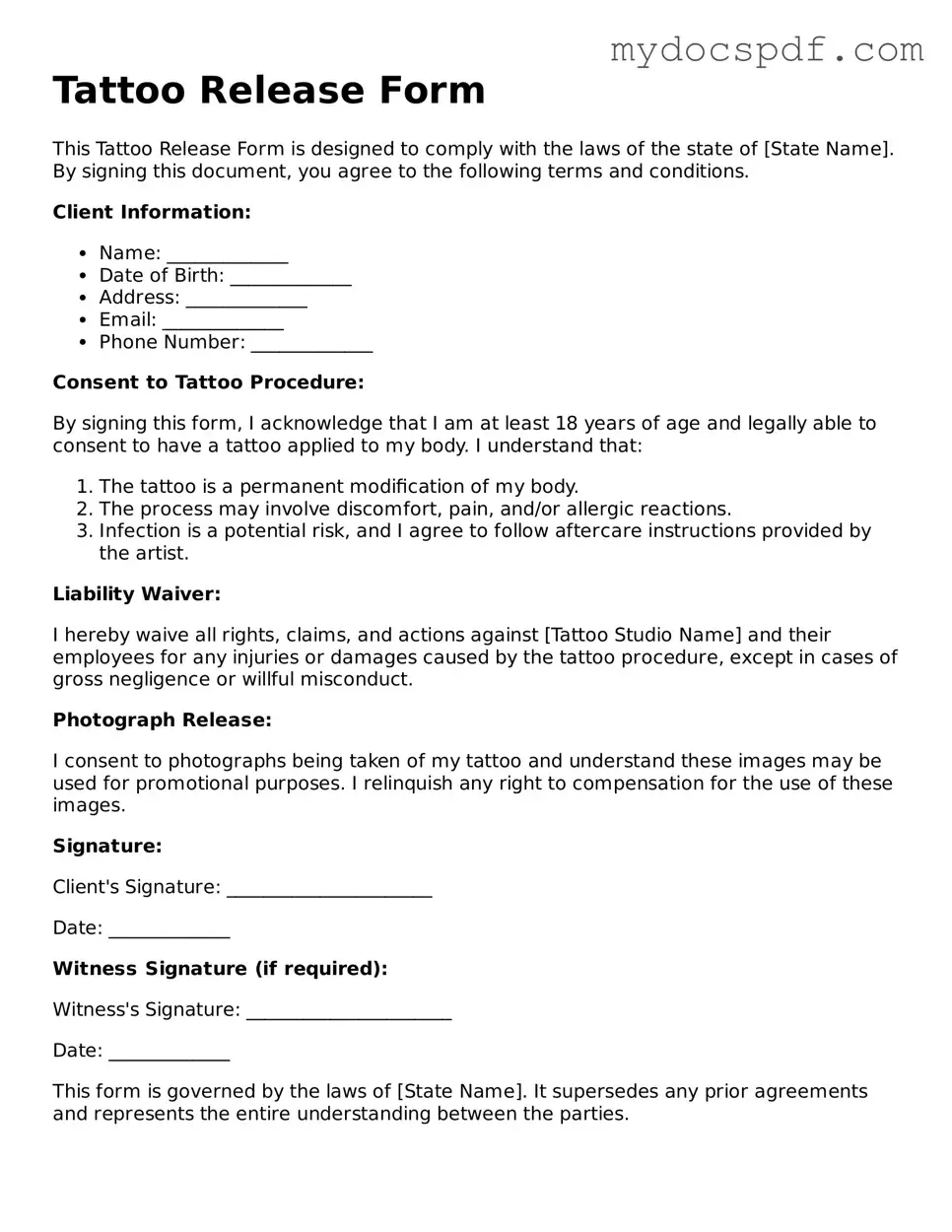Tattoo Release Form
This Tattoo Release Form is designed to comply with the laws of the state of [State Name]. By signing this document, you agree to the following terms and conditions.
Client Information:
- Name: _____________
- Date of Birth: _____________
- Address: _____________
- Email: _____________
- Phone Number: _____________
Consent to Tattoo Procedure:
By signing this form, I acknowledge that I am at least 18 years of age and legally able to consent to have a tattoo applied to my body. I understand that:
- The tattoo is a permanent modification of my body.
- The process may involve discomfort, pain, and/or allergic reactions.
- Infection is a potential risk, and I agree to follow aftercare instructions provided by the artist.
Liability Waiver:
I hereby waive all rights, claims, and actions against [Tattoo Studio Name] and their employees for any injuries or damages caused by the tattoo procedure, except in cases of gross negligence or willful misconduct.
Photograph Release:
I consent to photographs being taken of my tattoo and understand these images may be used for promotional purposes. I relinquish any right to compensation for the use of these images.
Signature:
Client's Signature: ______________________
Date: _____________
Witness Signature (if required):
Witness's Signature: ______________________
Date: _____________
This form is governed by the laws of [State Name]. It supersedes any prior agreements and represents the entire understanding between the parties.
